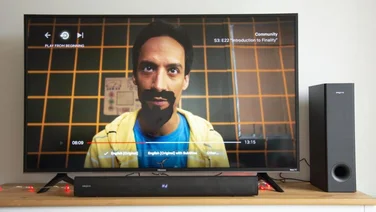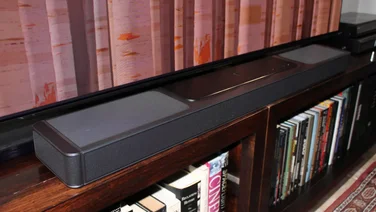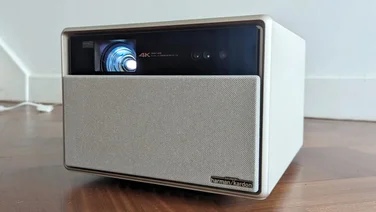To help us provide you with free impartial advice, we may earn a commission if you buy through links on our site. Learn more
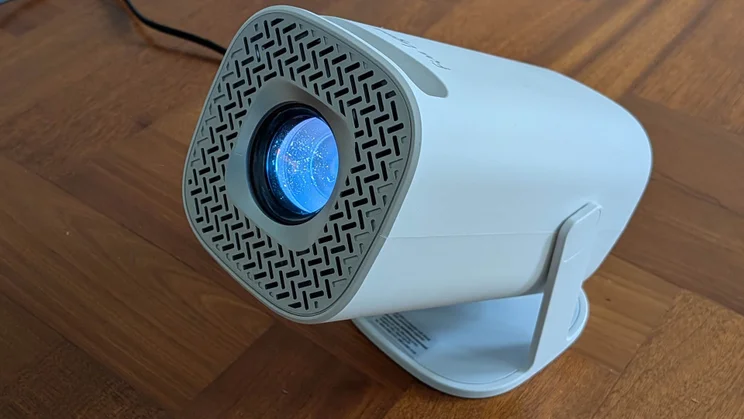
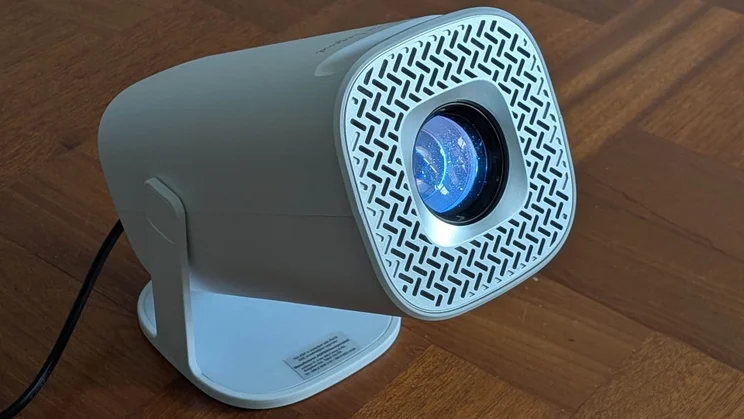
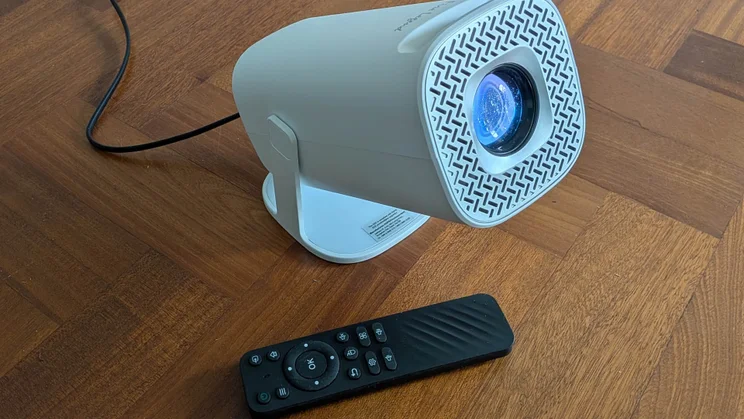
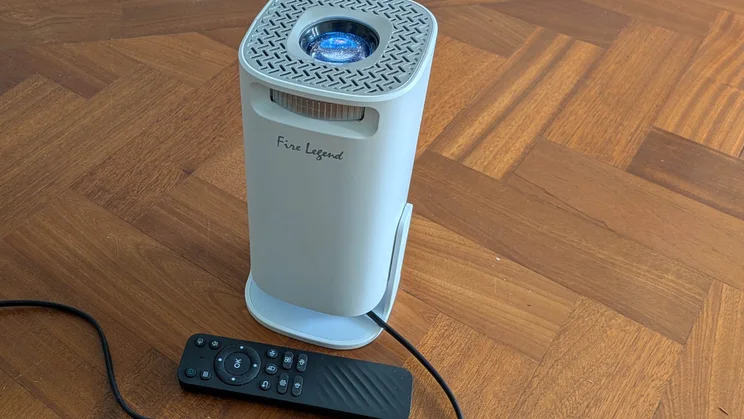
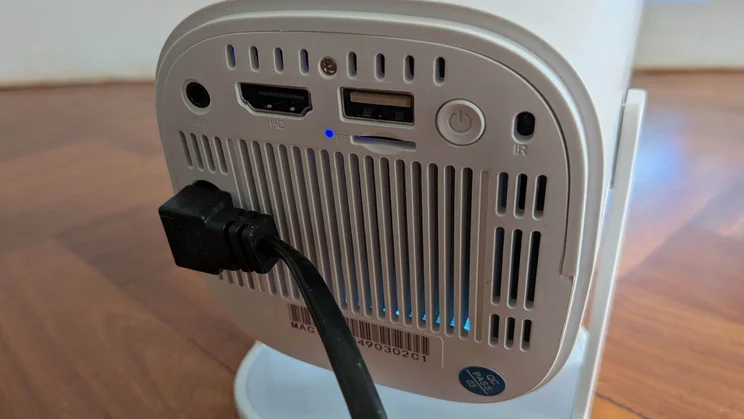
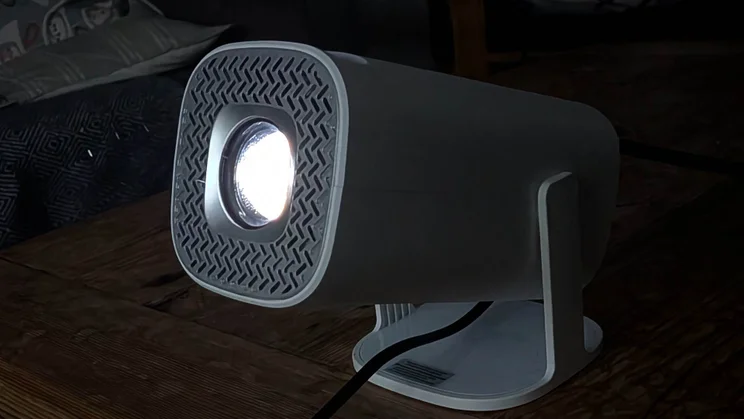
- Very cheap
- Lightweight and portable design
- Reasonable 720p picture quality
- Clunky software with poor app support
- Audio sync issues with external sources
Are you tempted by the new breed of portable projector but short on available cash? AOPEN, a sub-brand of Acer, might just have something for you. The Acer AOPEN QH15s is a compact portable projector with a design reminiscent of the Samsung Freestyle or the XGIMI MoGo 4.
Yet while those projectors cost in the region of £400, the QH15s can be found for as little as £120. True, it has a 720p HD-Ready resolution where its rivals are 1080p Full HD, but it still incorporates a built-in 3W speaker and integrated streaming. Where’s the catch? Unfortunately, it turns out that there a quite a few.
What do you get for the money?
There’s no doubt that the price is the QH15s’ major talking point, especially when it has a passing resemblance to some of the best portable projectors of the moment. Out of the box, it arrives as a 207mm tall column with the lens pointing straight upwards and a square footprint of 103mm x 103mm.
At just 620g, it’s possibly the lightest projector I’ve ever encountered. The body of the projector pivots on the integrated stand, allowing it to work at a range of angles and enabling placement on the floor or a coffee table for projection on the wall, a screen or the ceiling. The mechanism only allows it to work at specific angles, but it’s still pretty effective.






By current standards, the specs are pretty basic. You’re looking at what AOPEN calls 6,500 LED Lumens of brightness, but that translates to just 180 ANSI Lumens for comparison’s sake, where the Samsung Freestyle gives you 230 ANSI Lumens and the MoGo 4 450 ISO Lumens. The native resolution of the LCD engine is 720p, and the throw ratio is 1.25:1, giving you a 60in image from 1.66m or a 100in image from 2.76m.
While the focus is manual, using an old-school wheel in the top of the unit, close to the lens, alignment and keystone correction are automatic, with options for manual tweaking. Beyond the built-in Android TV streaming, you have a single HDMI 1.4 input on the rear plate, along with a USB 2.0 Type A port, plus a micro SD card slot. For audio, you have a single 3W mono speaker, Bluetooth wireless audio and a 3.5mm headphone out.
What does it do well?
The nicest thing you can say about the QH15s is that the image quality really isn’t all that bad. Sure, the 720p resolution and low brightness levels aren’t ideal if you push the picture size much above 60 to 80 inches, and even then, the colours look a little washed out. Yet it’s perfectly watchable in a dark room.
My colorimeter tests showed up some pretty obvious deficiencies, including sRGB coverage of under 50%, but that’s not unusual for such a low-budget projector, and at least the colour balance errs towards muted and fairly natural rather than artificial. There’s no hideous banding on what should be smooth colour graduations, and skin tones are reasonably authentic.






I watched a range of material on the QH15s, including episodes of Alien: Earth, Star Trek: Brave New Worlds and Reacher, plus chunks of Spider-Man: Across the Spider-Verse, The Lost Lands and Oscar-winning arthouse weepie, Past Lives. I even hooked up my Xbox Series S and played Doom: The Dark Ages and Avowed. Nothing looked anywhere as good as on my OLED TV or even the base model XGIMI MoGo 4, but nothing looked so bad that I felt compelled to stop watching. Judged on its image quality alone, the QH15s might be a decent option for family movie nights, holiday use or casual viewing when your TV is otherwise occupied.
While I’m feeling generous, I should also note that the auto-keystone correction works reasonably well, even if it’s not quite as responsive or accurate as what I’ve seen in recent Anker Nebula or XGIMI projectors. There’s quite a lot of screen shrinkage to make things line up if the projector is pointed too far from the perpendicular, but it doesn’t take much work to get a viewable image, provided you can tune the focus by hand.
What could it do better?
Where do I start? The software is probably the worst thing about the QH15s. It’s a very basic implementation of Android TV with a simplified UI and no Google Play store, and it’s clunky, slow and hard to navigate. The built-in app store downloads antiquated versions of the major streaming apps, to the point that Netflix, Disney+, Amazon Prime Video and Paramount+ simply didn’t work, with each service throwing up error messages recommending that I download the latest version of the app. Guess what? No updates were available.
This isn’t necessarily a disaster. It’s a cheap projector. Why not plug in a streaming stick? And yes, with my trusty Amazon Fire TV Stick inserted, I was back in action, streaming. Sadly, the audio was hideously out of sync, and only by maxing out the Fire TV’s own audio sync options could I pull image and sound in line. Things were no better with the Xbox Series S, either, where I had even less luck with keeping audio meshed in.






I’d like to say that the audio quality makes it worth your while, but it’s weedy, thin and almost entirely lacking in impact, making it more effective to plug some headphones in or use the Bluetooth output on the Fire TV Stick. Using the Bluetooth on the QH15s only seemed to add more lag between sound and image.
There’s no specific game mode on the QH15s – or much in the way of other modes or adjustments. You basically get what you get. That’s not great news for gamers, as there’s noticeable lag when you’re trying to play. I get killed a lot playing Doom: The Dark Ages, but it happened even more than usual on the QH15s.






I’m not too worried that there’s no onboard battery, though a USB-C power source might have given some options for use away from the mains. Instead, it uses an inset figure-8 power socket and a 1.5m power cable – a little short for a device you might be using in the middle of your lounge.
Should you buy the Acer AOPEN QH15s?
I wouldn’t. Paired with a streaming stick, it’s a tempting ultra-cheap projector, but even then, the sync issues and poor sound leave me thinking that you’d be better off spending slightly more on a superior projector, or even a budget 4K TV.
Last year’s Dangbei Emotn N1 is no longer available, but it delivered a much better all-round experience than the QH15s, and a successor, the Emotn N2, has just been released. If you can push your budget further, the Nebula Capsule Air and Capsule 3 are also significantly better.
I’d love this cut-price projector to give these more expensive units some serious competition, but mediocre 720p pictures and dodgy software just don’t cut it in this day and age.


